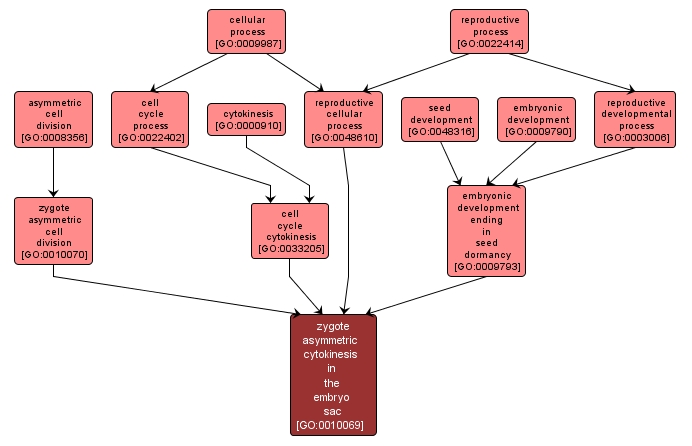| Desc: |
The division of the zygote in a plane perpendicular to the long axis of the embryo sac to produce a larger basal cell near the micropyle and a small terminal cell close to what was the central cell and is now the developing endosperm. An example of this process is found in Arabidopsis thaliana. |














